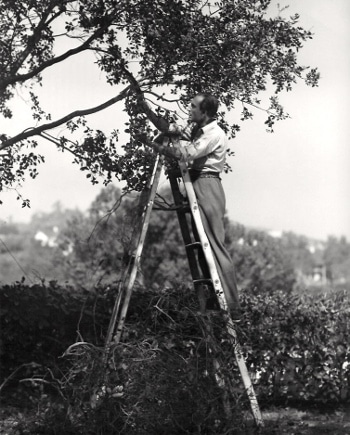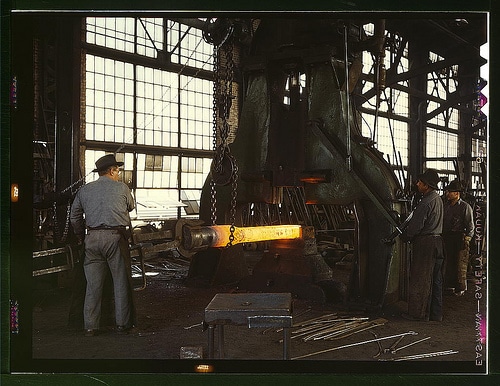
In Part I of this two-part series we explored the first once-in-a-lifetime opportunity of the twentysomething brain: its propensity for deep passion, a keen curiosity about others and the world, and fearlessness in the face of risk. But these qualities are only advantages if they’re used in the way they were designed: as the motivation to take intentional, forward-looking ventures – ones that lead to greater learning experiences, personal development, and independence. Taking a risk to see what it’s like to shotgun a beer won’t get you any closer to your ideal future.
Rather, at the same time you’re launching your passions, you should also be taking advantage of the second great opportunity of the twentysomething brain: the chance to take an active role in shaping the development of the executive part of your mind.
If your twenties are for launching, and your thirties are for building, then this is the opportunity to train your “builder,†the prefrontal “CEO” to which you’ll be handing over the reins to your “start-up†post-twenties. Moving from your twenties to your thirties is indeed very much like launching a company that you know you’re eventually going to leave; at the same time that you’re getting things going, you also need to train the guy who’s eventually going to take your place, giving him the skills and abilities he’ll need to steer the ship once you’re gone. The quality of this training will greatly determine the future success of the endeavor, i.e., the rest of your life.
Synaptic Pruning in the Orchard of Your Brain

Yesterday we talked about a hugely important process happening in your brain in your twenties that’s crucial for young adults to understand: the simultaneous revving up of the intense, emotional, risk-taking limbic system, and the maturation of the steady, rational, impulse-checking prefrontal cortex. But how exactly does the prefrontal cortex mature?
The majority of our brain development happens in two stages: overproduction and pruning. First, the brain overproduces millions of synapses, more than it could ever use — it over-prepares for what’s to come. Then it organizes and prunes this abundance of neural pathways, getting rid of those not in use and strengthening and stabilizing those that are — much like an arborist prunes dead branches off a tree.
It has long been known that this overproduction/pruning process occurs during an infant’s first eighteen months of life. The brain ramps up production of cells to prepare the tot for learning an enormous amount of information about language and the world around him in a short period of time. After age three, it begins slowly pruning away the pathways not in use, so that the human brain is 95% developed by age six.
What scientists have more recently discovered is that a second round of overproduction and synaptic pruning begins in adolescence and extends into a person’s mid-twenties. This time, the brain’s overproduction of synapses is not centered on things a baby needs to know like language and motor skills, but rather on the abilities essential to navigating adulthood – rational thought, reasoning, impulse control, goal-setting, and planning. Synaptic pruning is the process through which the maturation of the prefontal cortex actually happens – the way in which you train your “CEO.â€
Use It or Lose It
So how exactly does synaptic pruning work?
While the completion of the prefrontal cortex’s maturation will happen for everyone, not everyone’s corti will “set†in the same way. The development of your brain is not simply shaped by age, but also very much by experience.
Your brain does not prune its excess synapses in a willy-nilly fashion. What gets retained and what withers away is determined by what gets utilized and what is allowed to lie fallow.
As Meg Jay, author of The Defining Decade explains:
“In a use-it-or-lose-it fashion, the frontal lobe connections we use are preserved and quickened; those we don’t use just waste away through pruning. We become what we hear and see and do every day. We don’t become what we don’t hear and see and do every day. In neuroscience, this is known as ‘survival of the busiest.’â€
Or as neuroscientist Dr. Jay Giedd puts it:
“If a teen [or twentysomething] is doing music or sports or academics, those are the cells and connections that will be hardwired. If they’re lying on the couch or playing video games or watching MTV, those are the cells and connections that are going to survive.”
Basically, what this means is that the education, experiences, and relationships you choose to pursue in your twenties will determine the course of your brain’s synaptic pruning process.
This means you need to be intentional about tuning your prefrontal cortex for optimal performance in the decades to come! What training do you want give to your prefrontal CEO? What skills and abilities do you want to train your brain to deftly perform for the rest of your life?
Some folks downplay the importance of the twenties by saying it’s simply a dress rehearsal for what’s to come. But if that’s the case, you need to ask yourself what role it is you’re preparing to play. If you’re eventually hoping to nab the role of loving, loyal husband, does rehearsing by having only casual hookups prepare you for that? If you’re hoping to win the part of independent business owner, what kind of practice are you getting for that role right now?
Strike While the Iron Is Hot, and the Metal Is Pliable

This final development of your brain is akin to getting a wiring upgrade – after it’s completed, the prefrontal cortex will run faster and more efficiently. But what you gain in speed, you lose in flexibility.
This makes the period before the wiring job is complete a time of enormous opportunity. While your brain is still flexible and malleable, you can – and must – take an active role in shaping how the wire is laid. Never again will it be so easy to shape yourself, learn new things, and become the man you want to be.
Now don’t get me wrong, brains are “plastic†throughout our lives. We can always change our habits and behaviors, whether we’re 20 or 60. But once the adolescent brain finishes developing and “sets,†changing our course becomes harder to do. The plastic of the adolescent brain is more malleable, while the plastic of the older brain is of a harder variety – it takes more kneading and heat to mold it.
Or think of it this way: up through your mid-twenties, molding your behavior is like making trails through a grassy field. Once your brain is finished developing, it will want to take the path of least resistance – the trails you’ve already made, the neural pathways that you’ve already forged. Creating a new trail, post-twenties, will mean hacking a path through a field that has transformed from gentle grass into a dense, weedy jungle that requires a great deal more effort to plow through. It’s doable, but difficult.

Throughout adolescence and into the mid-twenties, gray matter is pruned as neural pathways not in use “atrophy,” while those being utilized are consolidated and organized more efficiently. As the graphic alludes to, addictions that begin in adolescence get wired into the brain as it “sets,” making them hard to shake off in adulthood.
This is why researchers have found that after age thirty, your thoughts, feelings, behaviors, and personality become relatively fixed and stable. There actually isn’t much debate among experts on this point: some say almost no changes are possible after thirty, while other say small changes are, and that’s about the extent of the divide in viewpoints. What they all agree on is that the majority of who you are is crystallized by age thirty, and as Jay explains, “Our personalities change more during the twentysomething years than at any time before or after.” In our thirties, we simply “continue with, or correct for, the moves we made during our twentysomething years.”
The reason there are thirtysomething men (and women) who are still head-scratchingly immature, is that they figured they could spend their twenties drifting and partying and then one day when they turned thirty things would magically come together for them and they’d be ready to shift into another gear. But when their brains “set†– the plastic hardened — the things that were going on in their lives at the time – waking up on someone else’s floor and working at Starbucks – had been etched into their corti.
If you don’t want to be the guy who’s living like he’s twenty-three at age forty-four (even when he himself is tired of that life and is ready for a different stage) sculpt your prefrontal cortex in your twenties by seeking out experiences and commitments that will exercise and challenge your ability to plan, set goals, and discipline yourself. Stretching yourself now will solidify the best neural pathways, strengthen and season your prefontal cortex, and create a cognitive foundation that’s prepared not simply for a few years of fun, but for a lifetime of happiness and satisfaction.
Listen to my podcast with author and psychologist Meg Jay:
Don’t Waste Your Twenties

Understanding more about how the brain works shows that contrary to the idea that these years are disposable and inconsequential, the pursuits you undertake, the relationships you form, and the decisions you make during this decade can in fact have an enormous, outsized impact on who you become and how the rest of your life turns out.
This knowledge, coupled with an understanding of the special powers of the twentysomething brain we discussed last time, has hopefully convinced you that “thirty is the new twenty†is indeed a bunch of baloney. People who tell you: “Don’t worry. You’ve got all the time in the world,†may mean well, but are wrong — the twenties are not interchangeable with every other decade to come. They are certainly not disposable.
Your twenties truly represent a once-in-a-lifetime opportunity. A confluence of factors creates a powerful, but short window of time, and you owe it to yourself to make the very most of it.
But what does that mean? Must you forego exploring and adventure in your twenties and settle down as soon as possible? Hardly.
Your twenties are in fact the perfect time for adventure and exploration, but the experiences you choose should have an element of intentionality. They should not only let you see and try new things, but also broaden your horizons, impact your character, and help you learn and grow. Seek experiences that both harness your passions and exercise and stretch the executive faculties of your mind.
There’s room in your twenties for a season working the ski lift at a resort, but you should also make room for a season of leading troubled teens on wilderness expeditions. There’s a place in your twenties for an aimless backpacking trip through Europe, but there also needs to be a place for a well-building mission to Africa. It’s a good time to date, but it’s also an ideal time to get hitched.
Basically, the more of your pursuits that point, however indirectly, towards your end goals, the better. It’s not that you must complete all your goals in your twenties. When I say the twenties are the perfect time for launching big things, launching does not mean finishing – it means beginning.
While I started off the last post by listing some of the notable accomplishments made by men in their early twenties, I did so in order to showcase the vast, and often overlooked potential of young men. But just as telling as that kind of list is one that shows the things twentysomething men were doing that didn’t bring them immediate success, but put them on the path towards it:
At age 20: Plato became a disciple of Socrates, This relationship paved the way for Plato to develop new ways of thinking that would eventually become cornerstones of Western thought.
At age 21: Jack London set sail for the Klondike with the first rush of gold-seekers. His adventure in the North would create the fodder for many of his most popular articles and books.
At age 22: Charles Darwin signed on as the HMS Beagle’s naturalist for a five-year voyage to South America and the Galapagos Islands. Although his father had told him not to go, saying it would be a waste of time, the copious notes and observations Darwin made and the collection of specimens he gathered on the journey would lead him to develop his theory of evolution.
At age 25: Future mythologist Joseph Campbell rented a shack in Woodstock, NY and engaged in rigorous and intensive independent study, reading the classics for nine hours a day, for five years straight.
At age 26: “Johnny Appleseed” brought apple seeds to the Ohio Valley. Yes, he was literally planting seeds in his twenties.
At age 27: Kurt Vonnegut, Jr. quit his job at General Electric to become a full-time writer and Henry David Thoreau went off for two years to live alone in a cabin at Walden Pond.
The twenties are not about checking off all of your goals, but rather creating a foundation that will allow you to build towards them for the rest of your life. As Jay puts it: “There’s a big difference between having a life in your thirties and starting a life in your thirties.” Starting your life and creating a solid foundation involves seeking education, experiences, and pursuits that align with your goals, challenge you, and thus produce what is called “identity capital.†Identity capital includes resume entries like degrees and jobs and volunteer work, but also our people skills, the ability to be resilient in the face of setbacks, the ability to solve problems under stress, and an understanding of culture, the world, and human nature. Studies have shown, Jay writes, that “Twentysomethings who take the time to explore and also have the nerve to make commitments along the way construct stronger identities.” These identities are associated with higher self-esteem, perseverance, realistic expectations, a clearer sense of self, greater life satisfaction, better stress management, stronger reasoning, and resistance to conformity. All qualities that will stand you in good stead no matter where life’s journey takes you. Identity capital acts as the currency of careers and relationships; the more you accumulate the “richer†you become, and the more and more doors you can open as you move into your thirties and the rest of your life.
Wait Brett! I’m Over Thirty and This Series Has Seriously Bummed Me Out! Is There No Hope for Me?
I definitely noticed that were quite a few comments on the first post to the effect of: “Well, this is depressing. I wish I had read this earlier in my life. Now it’s too late for me.â€
Cheer up ye thirty and fortysomethings (or ye spry, tech-savvy seventysomethings). This series was designed to inspire guys in their twenties to gain an understanding of how much potential this decade of their life holds, and that it should be taken full advantage of. But I don’t want older folks to walk away from this feeling like there’s no hope for them and they’ll just have to settle for wherever they are in life.
I do truly believe that the twenties are the ideal time to make important decisions, start big things, and make commitments – the unique but waning properties of the adolescent brain make it easier to do so than it will ever be again. But doing big things and making changes post-twenties isn’t impossible, it’s just harder. There are plenty of examples from history of men who made their greatest contribution to society later in life (we plan to put together a list of these late bloomers one of these days as well as cover steps you can take to turn things around). I also know several regular Joes who turned their lives around after 30 after spending their 20s drifting and now lead happy, fulfilling, and successful lives. For the disciplined and the dedicated, the gate to greatness is always open.
So to sum up: if you’re a youngin’, I beseech you to strike while the iron is hot and not let the opportunity of your twenties slip away. And if you’re a little longer in the tooth, don’t wish for what could have been, but push forward with your might. No matter what your age, a strong and wise captain can always turn the ship around.
Sources:
The Defining Decade: Why Your Twenties Matter–And How to Make the Most of Them Now –one of the best books I read last year. Highly recommended for any twentysomething.
Why the Teen Brain is Drawn to Risk
The Half-Baked Teen Brain: A Hazard or a Virtue?
Beautiful Brains
Adolescents’ Risk-Taking Behavior Is Driven by Tolerance to Ambiguity
Teenage Brains Are Malleable And Vulnerable, Researchers Say
What twentysomething men were doing in their 20s was taken from â€What Other People Accomplished When They Were Your Age†generator.


